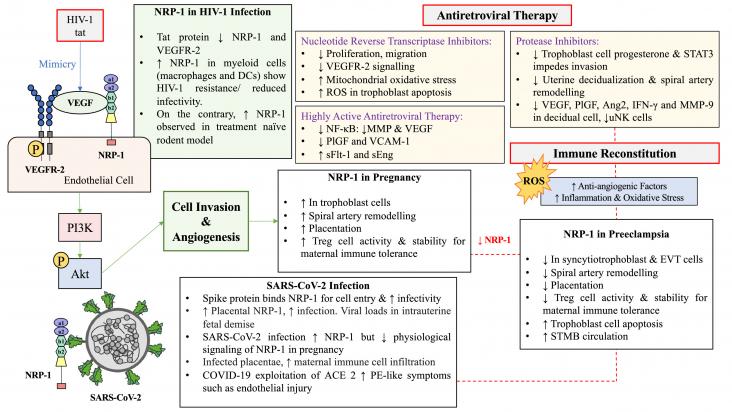People with any disabilities accounted for a quarter of total deaths. People with disabilities had higher average ages and poor economic conditions. All disability types presented higher mortality rates and lower life expectancy. The major causes of death differed according to the type of disability.
Recommends ways to maximise potential of autonomous vehicles to improve accessibility for disabled persons.

This review explores the role of transmembrane neuropilin-1 (NRP-1) in pregnancy, preeclampsia (PE), human immunodeficiency virus type 1 (HIV-1) and severe acute respiratory syndrome coronavirus 2 (SARS-CoV-2) infections. Since these conditions are assessed independently, this review attempts to predict their comorbid clinical manifestations.
Food insecurity, defined as insufficient access to nutritious foods, is a social determinant of health that may underpin health disparities in the US. American Indian and Alaska Native (AI/AN) individuals experience many health inequities that may be related to food insecurity, but no systematic analyses of the existing evidence have been published. Thus, the objective of this scoping review was to assess the literature on food insecurity among AI/AN individuals and communities, with a focus on the prevalence of food insecurity and its relations to sociodemographic, nutrition, and health characteristics. Based on the review, recommendations for future research were derived, which include fundamental validity testing, better representation of AI/AN individuals in federal or local food security reports, and consideration of cultural contexts when selecting methodological approaches. Advances in AI/AN food insecurity research could yield tangible benefits to ongoing initiatives aimed at increasing access to traditional foods, improving food environments on reservations and homelands, and supporting food sovereignty.
This Article supports SDGs 5, 8, and 10 by investigating the prevalence of workplace sexual harassment and violence by demographic factors and work sectors among Icelandic women, providing nuanced targets for prevention and for public policies aimed at promoting women’s safety in the work environment.
This article aligns with the SDG goal 3 of Good health and wellbeing, SDG 10 Reduced inequalities, and SDG 12 Responsible consumption and production by proposing Choosing wisely recommendations to help general practitioners adopt a more rational and cost-effective approach to treating patients with viral hepatitis in Brazil and Latin America.
This Editorial sharing the experiences of a Radiology Department-led Racial and Socal Justice Book Club supports SDGs 10 and 8 by describing the ways they made an intentional effort to normalize discussions about racial and social (in)justice and examine everything through an anti-racist lens.
Development of a siren identification system, using deep learning, for hearing-impaired people. Supports SDG 10.
This Article supports SDGs 3 and 10, assessing the effects of genomics, inheritance, and socioeconomic deprivation on neuropsychiatric risk in children with intellectual disabilities. The study shows that children with genomic variants and intellectual disability are at increased risk of neuropsychiatric difficulties.
How adapting math instruction for those with learning disabilities can allow them to increase their understanding of mathematics. Supports SDGs 4 and 10.
